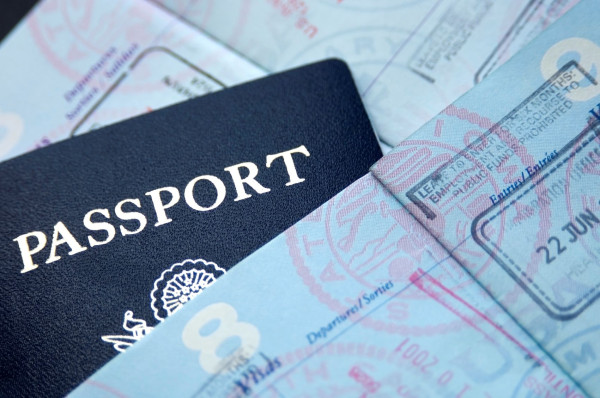
Preparing
What Do I Need to Travel in and out of Mexico?
For Mexico Customs, you will need a valid passport. All travelers, including US citizens, traveling to or through the USA must have a valid passport. US Citizens are no longer permitted to use their birth certificate/driver’s licence to enter the US from Mexico. Your passport should be valid for at least six month from the time of your entry into Mexico. The maximum period of time that a visitor may stay in Mexico without a visa is six months. Mexican Immigration may allow or deny entry of any person into Mexico when a passport is valid for less than six months. Passport holders of American, Canadian, British/EU Member Country, Australian, New Zealand, and Israeli passports do not need a visa to visit Mexico. They may, instead, use a visitor’s permit known as a FMT. Holders of other passports should check with their local Mexican Consulate for visa requirements. These passport holders simply fill out a short Mexican Visitor’s Permit (FMT). When arriving by airline, it is usually handed out on the plane before you land. If not, it is available at the immigration desk when you arrive. However, business visitors staying more than 30 days are subject to different rules than vacationer. IMPORTANT! YOU MUST KEEP YOUR FMT FOR YOUR DEPARTURE! If you do not have your FMT at time of departure, you will pay a fee and may be delayed. Mexico charges a fee to all tourists and business visitors arriving in the country. Airlines normally collect the permit fee on behalf of the Mexican government and include the cost within the total airfare. Visit the U.S. Department of State official Travel Initiative web site at https://travel.state.gov/ for more information.
What Can I Bring into Mexico?
The full list of allowable items is listed on the customs entry form. In general, you can bring per person:
- Personal Luggage: including items for personal use such as clothes, footwear, personal hygiene and beauty items
- Two cell phones or pagers
- Two cameras and twelve rolls of film or videotapes
- Three surfboards; four fishing rods; a pair of skis
- One used or new laptop, one used or new printer, one projector
- Two used or new items of sports gear
- One CD player or portable music player, one DVD player, and DVDs/CDs
- One musical instrument
- Twenty packs of cigarettes and twenty-five cigars or 200 grams of tobacco
- Three liters of liquor, three liters of wine
In addition, each person can bring $500.00 in new items (receipts required). Other items are subject to tax over a certain amount, which varies by time of year (more is permitted at holidays so that gifts can be imported). Prescription drugs are permitted with support documentation which proves a medical need. The documentation should include the patient’s name and a description of the medication. Guns and ammo are not permitted. It is a serious crime to have guns or ammo in Mexico. Visit the Mexican Customs Web site at www.aduanas.gob.mx for more details and updated list.
Clothing To Bring
Dress is casual. Everywhere. All the time. There are nightclubs and high end restaurants, though, to dress up for if you desire. Cabo is desert on the Sea. The climate is arid with lots of sun. During the high season, October to April, the temperature averages High 70/s/low 80’s daytime and high 60’s nighttime. Average Weather in Cabo Area:
Month Highs Lows
- January Mid-70s Mid-60s
- February Mid-70s Mid-60s
- March High-70s Mid-60s
- April Low-80s Mid-60s
- May Low-80s High-60s
- June Low-80s Low-70s
- July High-80s Mid-70s
- August Low-90s High-70s
- September 90s High-70s
- October High-80s Mid-70s
- November Low-80s Low-70s
- December High-70s Mid-60s
The Pacific side of Cabo is generally cooler than the Sea of Cortés side.
Credit Cards, Membership Cards, Cell Phones and Devices
You should call your credit card companies before you come and tell them you will be in Mexico. If you have Costco or Sam’s Club card, bring it with you as there is a Costco and Sam’s Club in town. If you don’t normally travel internationally, you may need to call your cell phone carrier and make sure you have cell phone service in Mexico and ask how it works. If you do not have a plan, international calling or especially data can be expensive. The Villa has an Vonage line, which will allow you to call the US or Canada at no charge and receive calls to a US phone number.
Advance Planning of Activities
Restaurants in the Cabo area are generally walk-in or available on short term reservation. Short term reservations are a good idea for large groups. However, some restaurants usually require advance reservations, particularly during the high season and holiday periods. This would include Edith’s and Farallon, which can be booked up weeks in advance. Edith’s is a very popular high end fare restaurant, with a reputation for good food and good service. Farallon is a high end fare restaurant with quite an exotic setting, built into a cliff over breaking waves.
Arrival
What Do I Do When I Arrive at the Los Cabos International Airport?
After you retrieve your luggage, you may have to pass your luggage through a scanner. One person in your group will also push a button (it looks like the walk/don’t walk button). If it is green, you keep going. If it is red, your baggage will be searched. After customs, you will be met by a hoard of persons trying to set up time share presentations. At the main terminal, Terminal 2, the time share people are in the first two rooms of persons after customs. They look official and will tell you anything to get you to stop. Some might even tell you that you must stop and show them your passport or travel papers. You do not have to. Some may ask you where you are going or what your travel arrangements from the airport are. No matter how you answer, they will tell you they have the person that does that. Some will tell you that your are going the wrong way. You are not. There is a long list of creative gambits. Unless you want to be set up for a time share presentation, ignore (politely) all of them until you get all of the way outside or to the taxi stand at the end of the second room. Once at the end of the second room, there is a taxi counter, or once outside, there will be another hoard of persons, now the right hoard. All the real travel persons are there, usually with signs or shirt tags. If you use the taxi counter inside, the rate is a set rate. Outside, the taxi rate is negotiable. In the lesser used Terminal1, there are two exits, one to the left and one to the right. You want the one to the right for a cab or car rental. Most of the Cabs use the toll road and pay the toll for you. Some don’t. Make sure in advance that the Cab will be taking the toll road and confirm who is going to pay the toll (its not much though). The toll road is clean, smooth, and the fastest route. If you plan on stopping at a grocery store along the way to your destination, address this also with the arranger at this time. Usually it is not any extra, and handled by way of a tip. All of the major car rental companies are at the airport. Representatives of the car rental companies are inside at the marked counters outside the exit door with shirts or signs, and there are also desks in the luggage area (again, the time share arrangers will tell you they are with the rental companies, so look for marked signs or shirts). All of the car rental companies use a shuttle, so the best thing to do is go all of the way outside and find a representative with a hand held sign or watch for the shuttle itself). If you are renting a car, you will want to take the toll road as you leave the airport, so ask where the entrance to the toll road is from the airport before you leave the rental company office. The toll is about $3.00 US , depending on the exchange rate. The toll takers will take US dollars, up to a $20. Tip: the police use radar on the toll road. It is a major speed trap, so do not speed. Ignore the cars that tailgate you, they will eventually pass.
Cabo Car Rentals A to Z
⇒
⇒Save 10% on a Weekend or Weekly Car Rental at Thrifty! Use code 101349.

